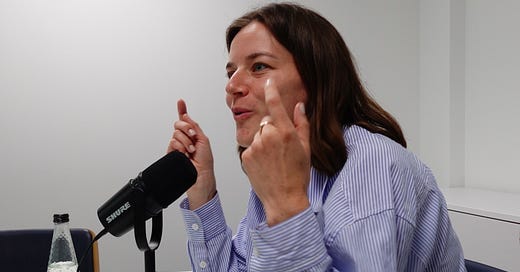How Creators Actually Get Paid
A breakdown of the creator economy’s real revenue engines (and mine).
Welcome to Creator Economy Dispatch, where research meets reality. Insights, interviews, and observations on how creators, brands, and platforms actually work together—part case study, part cultural commentary.
There’s a persistent myth that creators are paid by the platforms they post on. And while some are—through ad shares, tipping tools, subscriptions—that’s rarely where the real money comes from.
According to The Publish Press, over 70% of creators cite brand partnerships (where the creator promotes the brand’s product or service to their audience, typically in the form of sponsored posts, videos, or other creative content) as their top revenue stream. This is the spine of the creator economy. Unilever, for example, recently bumped its creator spend from 30% to 50% of total ad budget. Because it works.
Brand deals are the engine behind much of what gets made online. They’re also the most time-consuming, the most subjective, and the least standardized. No two are alike. Some are thoughtful, long-term partnerships. Others are briefless email chains and three rounds of creative approvals for a campaign deadline that expires in 12 hours.
But brand deals are just one part of a larger mix. For most creators, monetization is a patchwork: merch, products, Patreon, direct ad placements, affiliate links, usage rights, courses. Everyone’s mix is different. The infrastructure is clunky. The margins are unpredictable. And very few people talk about it in a way that feels honest.
So here’s how it shakes out in my world. This is Paddock Project’s 2024 revenue split:
Brand deals: 52%
Merch: 31%
Podcast ads: 12%
Patreon: 5%
Brand deals are the lifeblood. Merch works, but only if you keep the overhead low and have a brand people are proud to wear publicly. Direct ad placements are more predictable but far less lucrative. Patreon is intimate and slow-burning. Platform payouts? A rounding error for most.
This isn’t a complaint. It’s a ledger. It’s also a reflection of how creative work gets monetized across disconnected systems, each with its own terms.
In music, there's a model, however flawed, that ties creative output to direct payout (e.g. streaming royalties). That’s because musicians are seen as artists in a publishing economy. I still get deposits (albeit small ones) in my bank account from my COVID-era music production hobby.
Social media creators, except for the rare exceptions, are treated as content providers in an advertising economy. The work isn’t valued for its existence, but for what it can sell. Maybe that isn’t wrong. It just reflects a different kind of creative labor. But that’s a debate for another day.
Maybe “creator” is too big a monolith to generalize. There are many types, and the lines blur. But this distinction still shapes how labor is valued, and who gets taken seriously.
People bristle at sponsored content. But the truth is, if you’re consuming something for free, someone else is footing the bill. And it’s usually a brand with an ad budget. That trade-off lets creators keep their work accessible, without having to pass the cost to the people who actually show up to watch.





